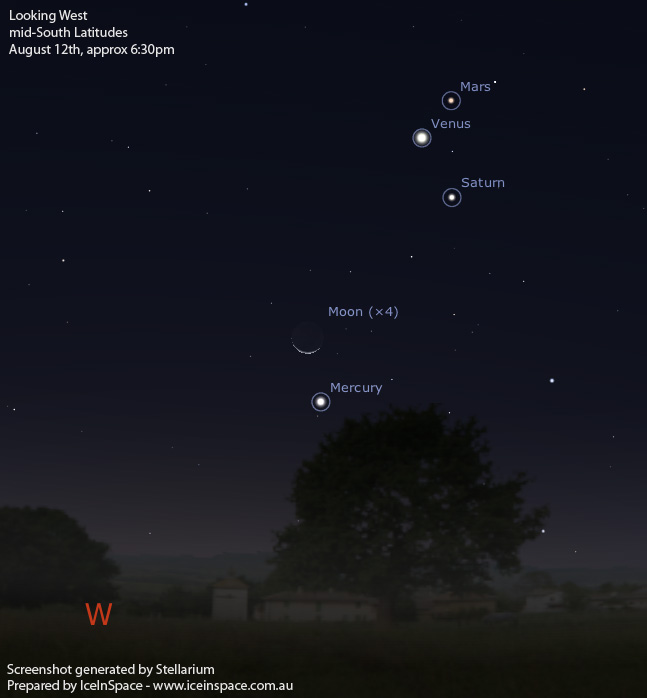August Starry night evening skies EARTHSHINE
We're in for a treat on August 12th and 13th when the crescent Moon joins four planets for a beautiful display in the West, just after sunset.
From late July through to late August, four planets have been visible in the evening sky. Venus, Mars and Saturn have been forming a triangle while Mercury has been a bit lower in the sky. It's been fantastic watching the planets each evening in the twilight glow.
When they are joined by the Crescent Moon with earthshine visible it's going to be a unique visual and photographic experience for everyone - so make sure you head on out to take a look.

Venus Mars moon sickle saturn mercury evening planet spectacular

Planetshine
The phenomenon known as planetshine occurs when reflected sunlight from a planet illuminates the night side of one of its moons. Typically, this results in the moon's night side being bathed in a soft, faint light. The best known example of planetshine is Earthshine, which can be seen from Earth when the Moon is a thin crescent.
Earthshine is used to help determine the current albedo of the Earth. The data are used to analyze global cloud cover - a climate factor. Oceans reflect the least amount of light, roughly 10%. Land reflects anywhere from 10-25% of the Sun's light, and clouds reflect around 50%. So, the part of the Earth where it is daytime and from which the Moon is visible determines how bright the Moon's Earthshine appears at any given time.
Conjunction of Venus and the Moon during Earthshine.
Studies of Earthshine can be used to show how the Earth's cloud cover varies over time. Preliminary results show a 6.5% dip in cloud cover between 1985 and 1997 and a corresponding increase between 1997 and 2003. This has implications for climate research, especially with regards to global warming. Some clouds have a net warming effect because they trap heat, while others have a net cooling effect because they increase albedo, so the overall effect on global temperature remains unclear.

Ringshine on Saturn as it eclipses the sun, seen from behind from the Cassini–Huygens.
 Stumble It!
Stumble It!
0 Comments:
Post a Comment
<< Home